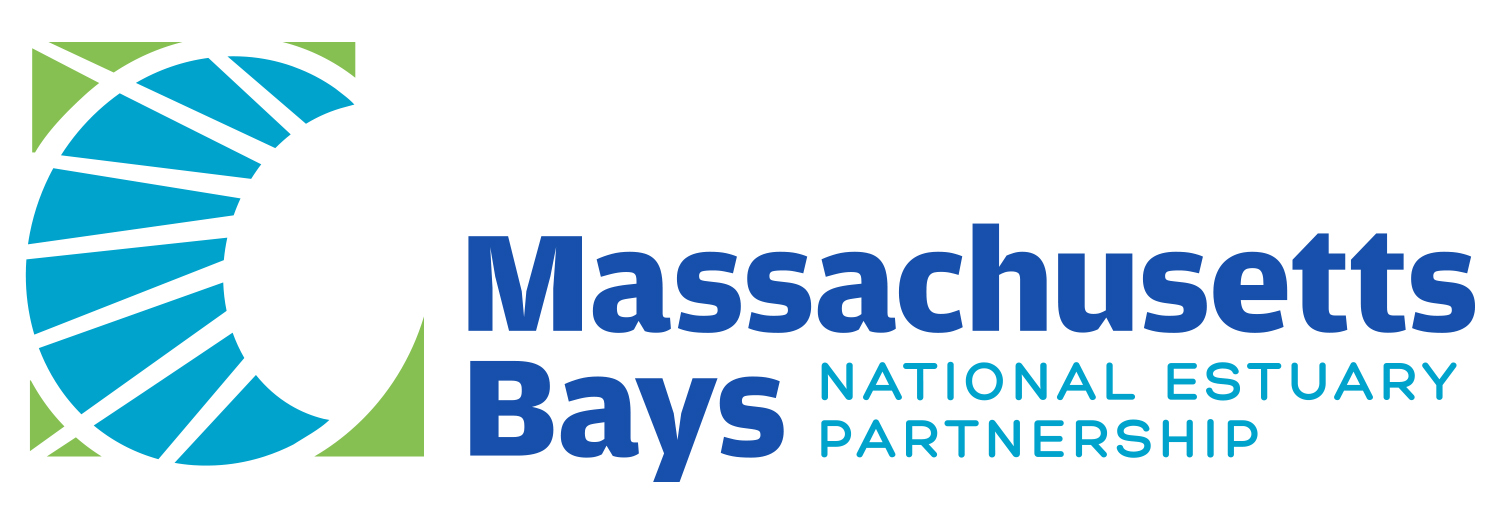In May 2024 MassBays announced the award of $85,883 in federal funds to help towns and organizations improve ecosystem health in Ipswich Bay and Massachusetts Bay through the Healthy Estuary Grants Program. The funds will be matched by $72,027 in municipal and private contributions. The Healthy Estuaries grants are being awarded by the Massachusetts Bays National Estuary Partnership (MassBays) with funding from the U.S. Environmental Protection Agency (EPA).
“MassBays is dedicated to supporting local efforts that improve local coastal habitats,” said Pam DiBona, Executive Director of MassBays. “These projects are stellar examples of that work, and we look forward to sharing the results across the Bays.”
“With the innovative tools MassBays has developed and shared, as well as the critical technical support provided by its staff and regional coordinators, we are seeing Massachusetts coastal communities make thoughtful, informed decisions about the sustainability of their towns and their environments.” said EPA New England Regional Administrator David W. Cash.
The following five projects have been funded through this year’s grants:
Merrimack Valley Planning Commission – $10,000. Funding will be used to advance long-term monitoring projects within the Great Marsh system, ultimately helping to identify areas of habitat vulnerability and opportunities for future restoration. Through integrating Unmanned Aerial Vehicle (UAV) technology into three long-term monitoring projects (monitoring marsh edge erosion, tracking large-scale marsh wrack deposition, and advancing native eelgrass restoration), the Merrimack Valley Planning Commission (MVPC) aims to develop more streamlined, precise, and sustainable methodologies for long-term and large-scale habitat monitoring within the Great Marsh and beyond. “This funding provides a critical opportunity for us to integrate new and innovative research approaches into our work.” said Cecelia Gerstenbacher, Merrimack Valley Planning Commission’s Environmental Program Manager. “MVPC, along with its project partners, the University of New Hampshire and Boston University, is excited about the benefits this project will provide.”
Town of Hingham, MA. – $15,000. A former hotspot for shellfish habitat on the south shore Hingham Bay’s mudflats are currently classified as conditionally restricted, meaning shellfish can only be commercially harvested. Because the 30-40 commercial diggers of the past are a distant memory, the shellfish population in Hingham Bay is currently commercially unproductive. With funding from this grant, matched with town funds, the Town of Hingham will conduct a Shellfish Resource Assessment Survey in Hingham Bay to provide a better understanding of the present state of the shellfish resource area, including shellfish populations, distributions, abundance, and stressors, with the goal of protecting and improving the viability of future stocks and potentially improving the harbor ecosystem. Results will be shared with the Division of Marine Fisheries (DMF) and used in conjunction with their data to reassess the classification of the harvesting areas. “We are thrilled to receive funding from the MassBays Healthy Estuaries Grant to fund a Shellfish Recourse Assessment aimed at better understanding the present state of the Town of Hingham’s shellfish resource areas and its shellfish populations,” said Hingham Harbor Master Kenneth Corson.
Ipswich River Watershed Association – $19,805. Funding for the Castle Neck River Restoration Monitoring project will capitalize on ongoing connectivity restoration work in the river system by conducting pre- and post-restoration monitoring at the Old Essex Road project site. Monitoring data collected from the restoration site will be used to inform and develop a broader monitoring framework for the entire Castle Neck River system. This framework will be applied in future culvert restoration projects that will require monitoring for water quality, marsh migration, and forage fish presence.
Salem State University – $24,998.57. With this funding Salem State University, in collaboration with Salem Sound Coastwatch and the Center for Coastal Studies, will study “legacy” nutrients in the sediments of Salem Harbor. Several years of research into the potential causes of turbidity in Salem Harbor have revealed, among other things, unexplained high levels of phosphorus in sediments in Salem Harbors. The research team hypothesizes that nitrogen and phosphorus sequestered at the bottom of the harbor are released seasonally to the water column, leading to phytoplankton blooms, decreased water clarity, and eutrophication of the embayment. This study will explore the dynamics of legacy nutrients and provide managers with information for decision-making to improve water quality conditions and restore lost habitats such as eelgrass. “Our collaboration with Dr Brad Hubeny and his geology team at Salem State University began in search of an understanding of eelgrass loss in Salem Harbor. We are excited to build upon our previous research to better understand the nutrient sources feeding phytoplankton blooms,” said Barbara Warren, Salem Sound Coastwatch and Lower North Shore MassBays Regional Coordinator.
University of Massachusetts Boston – $16,089. Kelp forests sit in the shallow waters of Massachusetts Bay and yet little is known of the distribution of this vital habitat as it has never been mapped. With MassBays Healthy Estuaries grant funding, the research team at the Biology Department will combine various methodologies including spatial drop camera surveys, remote sensing data layers, causal analysis, and machine learning to create fine-scale maps of likely kelp habitats in Massachusetts Bays and up the coast in the Gulf of Maine. These maps can inform conservation efforts, aid in coastal planning and bring awareness to the widespread distribution and importance of kelp beds in Massachusetts.
For more information on the Healthy Estuaries program see here.
